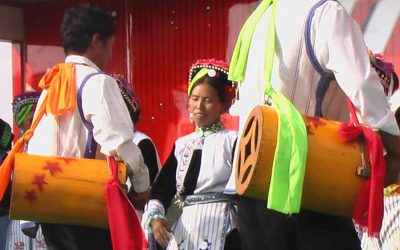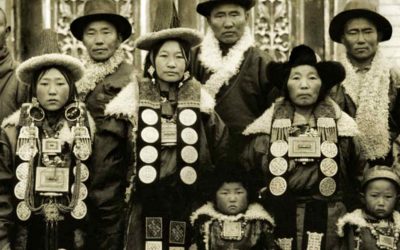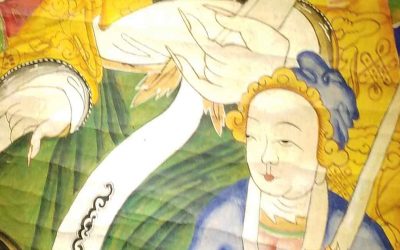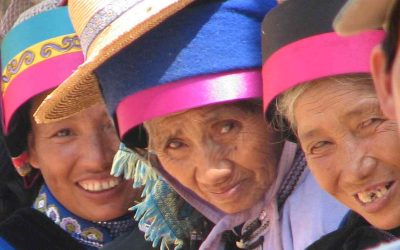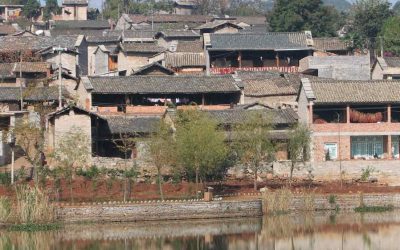How to prepare green tea to enjoy all its health benefits
All people related to China have a vague idea that tea is good, our friends tell us so, sometimes an article appears in a newspaper or magazine, or the public relations of the tea houses or plantations that are occasionally visited by tourists repeat it to us, but the truth is that I had rarely come across a study as interesting as the one I am commenting on here.
In an article that appeared in Food Research International in 2010, Drazenka Komes and her team[1] investigated the influence of tea preparation, different extraction conditions and storage time on the preservation of its bioactive components and antioxidant capacity. For those who do not want to read too much, the results of this research suggest that the extraction efficiency of the bioactive compounds of green tea reaches maximum efficiency during aqueous extraction at 80ºc, for 5 minutes for powdered tea (matcha type), 15 minutes (tea-bags Lipton) and 30 minutes (loose leaf tea).
The authors state that “all green teas exhibited significant antioxidant capacity in vitro, which was in correlation with their phenolic content, confirming that green tea is one of the best dietary sources of antioxidants” (page 167).
The health benefits of tea are believed to come from the polyphenols it contains, which are chemical compounds with antioxidant properties. These polyphenols include flavanols, flavandiols and phenolic acids, and constitute up to 30% of the dry weight. The most important flavonoids are catechins, which are present in 10% of the dry weight. “These native phenolic compounds are strong antioxidants with antimutagenic, anticarcinogenic, hypocholesterolemic, antibacterial, antiallergic and other clinically relevant activities. Kao, Hiipakka, and Liao (2000) found that among green tea polyphenols especially (—)-epigallocatechin gallate (EGCG) significantly reduced food intake, body weight, blood levels of testosterone, estradiol, leptin, insulin, insulin-like growth factor I, LH, glucose, cholesterol and triglyceride, as well as growth of the prostate, uterus and ovary. (167).
Green tea also contains methylxanthines: caffeine, theobromine and theophylline, which are responsible for its mildly stimulating effects, and have beneficial health effects. Caffeine improves mental activity, running performance, and is used to treat apnea and migraines, and theophylline and theobromine have been used in the treatment of asthma and bradycardia. Besides phenolic compounds and methylxanthines, tea provides a significant dietary source of polysaccharides, vitamin B complex, vitamin C, vitamin E, R-aminobutyric acid, fluoride, as well as minerals and trace elements such as K, Mn, Cr, Ni and Zn (168).
The main objectives of the present study were: (A) to determine the effect of different extraction conditions (temperature of water, extraction time and multiple extraction) on the content of phenolic compounds and methylxanthines in different green teas; (B) to determine the antioxidant capacity of green teas depending on extraction conditions and storage time of prepared infusion; and (C) to compare the content of studied bioactive compounds in loose leaf, bagged and powdered green teas.
These researchers studied the effect of different extraction conditions (tea shape, water temperature, extraction time and multiple extractions) and the storage time of the prepared infusions on the content of phenolic compounds and methylxanthines of green teas and their antioxidant capacity. It is important to emphasize that all the teas analyzed are a rich source of phenolic compounds, the content of which depends on the extraction conditions. The highest TPC (Total Phenolic Content) and TFC (Total Favoniod Content) were detected in bagged Twinings green tea (2,560 and 1,920 mg/L GAE, respectively) and Matcha green tea powder.
Among the teas tested, bagged green tea was recognized as the richest source of phenolic compounds (TPC and TFC), which reached their maximum values when water heated to 100 °C was used for extraction. The results obtained confirmed that water at higher temperature extracted higher TPC and TFC. Although the first extract of green teas is usually discarded due to excessive astringency, it is concluded that the practice of reusing tea samples is not a good way to drink, as most of the health-enhancing compounds (flavonoids) are broken down. And compared to the first extraction, the second and third extractions of the three forms of green tea at 80 °C yielded significantly lower TPC and TFC.
The obtained results suggest that higher water temperature and short extraction time, as well as lower water temperature and longer extraction time are the best combination for the extraction of bioactive compounds from green tea, allowing the best extraction efficiency. According to some previous studies, catechin content is time and/or temperature dependent, with the best results in catechin extraction achieved at 90 °C for 80 min.
The addition of milk showed a diverse impact on the antioxidant capacity of tea and may decrease the antioxidant potential of black tea preparations. The antioxidant capacity of the three forms of green tea increased with the addition of lemon juice, which is directly attributed to the synergistic effect of ascorbic acid on the polyphenols present in the tea extract.
The results of this investigation suggest that the antioxidant capacity of all teas tested was correlated with the total phenol content, depending on the extraction conditions.
[1] Drazenka Komes, Dunja Horzic, Ana Belscak, Karin KOvanevic Ganic, e Ivana Vulié. Green tea preparation and its influence on the content of bioactive compounds. Food Research International 43 (2010) 167-176
Cite this article as: Ceinos-Arcones, Pedro, «The first description of the Religion of the Yi,» in Ethnic China, 21 marzo 2021, https://ethnic-china.com/the-first-description-of-the-religion-of-the-yi/.
Last posts
The Flood Myth, Shamans and the Sani Religion
The Flood Myth, Shamans and the Sani Religion We continue with the second chapter of Paul Vial “Los Lolos”, in which fragments dedicated to the myth of the flood and the activities of its shamans are particularly striking. CHAPTER II - RELIGIOUS TRADITIONS These...
There was a matriarchy among the Yugur?
There was a matriarchy among the Yugur? The matrimonial customs of the Yugur present differences between their two main groups. Among the Eastern Yugur, girls had a time of great sexual freedom. Their rite of passage was the ceremony of making the headdress, which was...
The Yugur of Gansu, descendants of the Kings of Dunhuang
o The Yugur of Gansu, descendants of the Kings of Dunhuang Name. Their Chinese name is Yugu, written 裕 固 族. The Yugu or Yugur call themselves Yaoyuer and Xilayuguer. The name Yugur is relatively recent, as it only began to be used after 1949. Population: About 13,000...
Two stories of Liu Ba, the Bai trickster
Two stories of Liu Ba, the Bai trickster The Bai are one of the minorities who have had the longest contact with the Chinese.They are also one of the minorities that has received more cultural influences. This has been due to the accessibility of the land they...
The history of the Sani of the Stone Forest
The history of the Sani of the Stone Forest As told by father Paul Vial in his book Les Lolos, Histoire, religion, mœurs, langue, écriture. The Lolos say they came from the region between Tibet and Burma, and at the very beginning of their history, they...
Danuohei, the stone village of the Sani minority
Danuohei, the stone village of the Sani minority Danuohei Village - (大糯黑村) is a Sani minority village. The Sani minority, actually a branch of the Yi, lives in the whole area around the Stone Forest until reaching Puzhehei, where one can also visit some beautiful...





